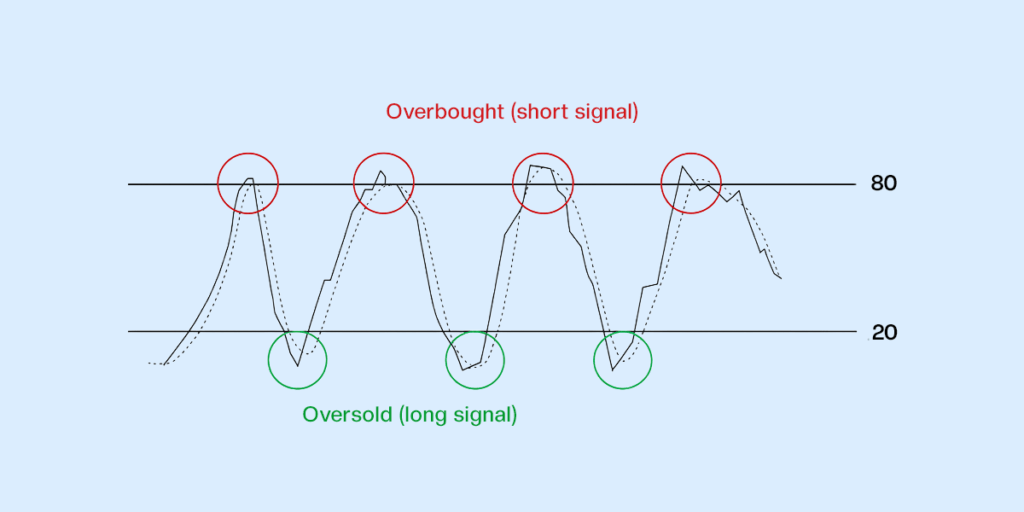Remember being a child and saving money in a piggy bank? ₹10 here, ₹20 there and then after a few months, when it’s all filled up, the joy of breaking it and using that money to buy something you’ve had your eye on. Little amounts saved in the piggy bank regularly led to a significant amount over time, helping you make purchases that mattered to you. A Systematic Investment Plan (SIP) is like the piggy bank for adults but a lot more refined and powerful.
Whether you are a first-time investor trying to figure out what an SIP is and how it works, or an experienced investor who hasn’t yet explored this investing tool yet, this SIP guide is for you. From the benefits of SIP to the best SIPs to invest in, we have got you covered.
1.What is SIP?
A systematic investment plan is one of the most popular ways of investing currently. Over the last few years, SIP has become the gateway for most first-time investors to the world of investing as well as one of the favourite investing methods for experienced investors.
Made popular as an investment route for mutual funds, SIPs have been helping investors build their wealth through small regular investments over time instead of waiting to save up enough money to invest at once. As of December 2022, SIP mutual fund accounts in India stood at 6.12 crore, while the total amount of money collected through SIPs during December alone was ₹13,573 crore, according to data by the Association of Mutual Funds in India (AMFI).
While SIPs are often associated with mutual funds, it is simply a mode of investment that can be used for other securities as well. In fact, given the various benefits of the SIP route, it is commonly used for investment products such as Exchange Traded Funds (ETFs) and stocks.
2. How does SIP work?
Through an SIP you can invest a fixed amount of money in an investment portfolio of your choice at regular intervals, say daily, weekly, monthly, or quarterly. Think of it like a recurring deposit at a bank but instead, your money gets invested in the stock market or debt securities, depending on the investment product you choose.
With as little as ₹500 or ₹100 in some cases, SIPs allow you to access different asset classes without the need to have a lump sum amount saved up for investing. The accessibility and convenience offered by SIPs are only two of its many benefits. Let’s look at other advantages of SIP that have made it one of the most preferred investment options for investors in the country.
3. What are the benefits of SIP?
SIP comes with a host of benefits from rupee-cost averaging to financial discipline, and here are some of the top ones:
Power of compounding
Compounding is the not-so-secret ingredient in building wealth over the long term. When you invest money, and it earns returns, the power of compounding makes your returns earn further returns. So, essentially, your money is making you more, and SIP is the perfect way to capitalise on the power of compounding.
By investing a small amount regularly in SIP in an investment product of your choice, you can build a significant corpus over time to meet your long-term financial goals. For instance, if you start a monthly SIP of ₹5,000 for 12 years with an estimated rate of return of 12%, by the end of the investment tenure, you would have about ₹16.11 lakhs. What’s important to note here is that the amount of money you would invest over 12 years would only be ₹7.2 lakhs, while the remaining ₹8.91 lakhs would be the returns you would earn. To understand this correctly, it is the time that you’ve stayed invested that has earned you the huge returns. SIPs help you invest early, and get time in the market, even with small amounts.
Rupee-cost averaging
SIP is one of the best ways to invest in the stock market. That’s because it systematically lowers the risk of market volatility while maximising the returns through rupee-cost averaging. When you invest through SIP, you invest a predetermined amount of money at regular intervals irrespective of the market conditions or the stock price. So, the need to time the market or delay your investments based on market conditions is unnecessary.
Instead, the units you purchase are adjusted. When the stock prices are high, fewer units are purchased, and the stock prices are low, more units are bought. This tends to average the cost of your overall investment throughout the investment horizon, lowering the impact of market volatility. Hence, SIPs, through rupee-cost averaging, tend to iron out any short-term market fluctuations and safeguard your returns.
Ease of investing
One of the primary reasons why SIP investments are popular with retail investors is that SIP makes the process of investing in stocks, bonds, and other assets as easy as it can be. Once you have selected the investment product you want to invest in and set up auto-pay with your bank account, the SIP amount will automatically get deducted every month (or at your chosen frequency).
This way, the process of investing is streamlined, and you can go about your busy schedule without having to worry about yet another task. You can choose to stop your SIP at any time or make adjustments as you see fit to the amount. However, unless there is a need to change something, your SIP investments will keep going through and bring you closer to meeting your financial goals.
Financial discipline
Another benefit of SIPs is that they inculcate financial discipline and allow you to manage your money better. Once you set up an SIP, you know that that amount will automatically be deducted every month and go toward your investments. So, the temptation to skip investing in a month to overspend or make an unplanned purchase is done away with.
SIPs also help meet large corpus goals that may seem overwhelming in a steady, manageable manner. If you think of saving up ₹30 lakhs for the down payment of your first home, that may feel daunting. However, if you think of investing ₹13,000 a month over 10 years at an estimated rate of return of 12%, suddenly, this may seem a lot more doable.
Now that you know why SIPs are beneficial, let’s take a look at all the different ways you can make SIP investments.
4. Types of SIPs
The best thing about SIP investments is that they afford great flexibility. You can choose from the various types of SIPs out there, depending on which meets your needs the best. And here are the types of SIPs you should know about:
Fixed SIP
Fixed or regular SIP is the standard SIP option. Here, you select an SIP amount, SIP frequency, and SIP period, all of which remain fixed throughout the investment tenure. Most investment platforms allow the minimum SIP amount to be ₹500, while some also allow amounts as low as ₹100. As for the frequency, you can choose daily, weekly, monthly, quarterly, or yearly; however, monthly is the more common SIP frequency since it’s tied to the frequency of paycheques for salaried individuals.
Flexible SIP
Also known as flexi SIP or flex SIP, flexible SIP gives you the option to change your SIP amount. While the date of the SIP contribution and the scheme to be invested in will remain the same, you have the option of intimating the investment platform about a change in the SIP amount a week in advance (or as per the platform’s policy). You can change the SIP contribution amount depending on your financial situation or changes in the market condition. In the case of a flexi SIP in mutual funds, the fund house has a predetermined formula to change the SIP amount when the market conditions change.
Top-up SIP
Top-up SIP, also known as step-up SIP, allows you to increase your SIP amount in a predetermined, systematic fashion. You can decide to increase your SIP contribution either by a fixed amount or a fixed percentage at a pre-decided regular interval. For instance, you can start with a monthly SIP of ₹5,000 and opt for a ₹1,000 increase after every six months if you choose the top-up SIP option.
Perpetual SIP
When investing in SIP, you have the option of selecting the investment tenure, i.e., the date up until which you want your SIP contribution to continue. In case you decide to leave that option blank, you will be opting for a perpetual SIP. Here, your SIP will continue indefinitely until you decide to instruct the fund house to stop it. This can be a good option when you don’t know how long you want a specific SIP investment to continue and can decide later, depending on your goals and market conditions.
Trigger SIP
Trigger SIP is a good option for investors with some knowledge of market trends. Here, you can set a certain event, date, or value as a trigger upon which your SIP will start, stop, or switch to another scheme. For instance, in the case of an index-driven trigger, your SIP units will either be topped-up or redeemed if the benchmark index rises or falls by a predetermined level. Trigger SIP involves speculation and hence, is only recommended for experienced investors.
When talking about SIP investments, lump sum investments are often brought up. Let’s see why that is.
5. How is SIP different from a lump sum investment?
SIP and lump sum investments are two modes of investing in the same investment product. Whether you opt for the SIP option or the lump sum option, your investment product does not change; it’s simply two different routes to the same investment. However, depending on which option you choose, there can be some changes to your investment returns.
While SIP investments allow you to invest small amounts regularly, a lump sum investment involves a one-time investment of a considerable sum of money. Lump sum investments are not accessible for all investors since they require a significant amount of money beforehand, unlike SIP investments, where you can begin investing with small amounts.
Also, when making a lump sum investment, timing the market becomes necessary. That’s because, unlike SIP investments, lump sum investments do not have the advantage of rupee-cost averaging. Lump sum investments can thus be riskier. However, if you have the right market knowledge and a significant amount of investible corpus, then making a lump sum investment could be advantageous since a larger amount of money stays invested in the market for the same length of time.
6. Who should invest in an SIP?
Everyone. The truth is that SIP investments allow you to access most asset classes and securities with low-risk and low-commitment, depending on the SIP amount and frequency you choose. If you carefully choose the investment product or portfolio you want to invest in, an SIP will help you come closer to meeting your goals in different life stages.
While everyone should invest in an SIP, the way one should do it depends on their age and life phase. Let’s see how.
7. How to invest in SIPs based on your age?
The way to invest in SIPs will differ depending on your age, income, financial responsibilities, and goals. Here’s how to invest in SIPs across ages.
SIP in 20s
Even if you are a college student or have just started to earn, you can begin investing in a monthly SIP of ₹500 or ₹1,000. Since you are young, your risk appetite is higher, and your money has a long time to grow and benefit from the power of compounding. Hence, you should look at starting an SIP in equity and equity-linked products such as stocks and equity ETFs.
As time goes by and your income and investment knowledge increase, you can look at diversifying your investment portfolio and start more SIPs in different equity products with higher amounts. Your SIPs in your 20s could be linked to goals such as higher education, buying a vehicle, going on a vacation, or saving for your wedding.
SIP in 30s
If you’re in your 30s, your financial goals may be bigger now, such as buying a home, planning for retirement, etc. Your risk appetite will still be fairly high, and hence most of your SIPs should be in equity products. You can also have SIPs in hybrid funds, such as balanced advantage funds that invest in both equity and debt securities and dynamically manage asset allocation.
Since your income may be fairly stable by now and your earning capacity may only be steadily increasing, you can consider opting for step-up or top-up SIPs. This will allow your investment contributions to increase as your income increases, helping you to meet your goals more quickly.
SIP in 40s
In your 40s, while your income level may be the highest, your financial obligations too may be the most, and hence your risk tolerance will be moderate. Now is when you should add more SIP investments in debt instruments to hedge the risk of volatile stock markets.
Your goals now may be funding your children’s education and wedding, taking care of dependent parents, and focusing on building your retirement corpus. Accordingly, your SIPs will have different investment tenures.
SIP in 50s and above
When you’re in your 50s, retirement will be close. Hence, it is the right time to increase the debt allocation in your portfolio. In your golden years, you will also need regular passive income, so focusing on debt funds and dividend yield funds for fixed income can be strategic.
It is also the perfect time to supplement your SIPs with Systematic Withdrawal Plans (SWPs). An SWP lets you systematically withdraw fixed sums of money from your investment portfolio over time.
8. Things to consider when starting an SIP
Before you start an SIP, there are a few things you need to consider to ensure that you make the most out of your SIP investments.
Identify your goals
Goal-based investing works best with SIPs. You need to identify your short-term, medium-term, and long-term goals and then link each with a specific SIP investment. For instance, if you have a goal of saving ₹15 lakhs to fund your wedding seven years down the line, then by using an SIP calculator, you can know that you need to invest about ₹11,500 monthly in an equity investment with an estimated 12% rate of return.
Assess your risk profile
By assessing your risk profile, you will know what kind of scheme you should start an SIP in. Your risk profile is determined by your age, income, financial obligations, personality, etc. Someone in their 20s with no dependents and several income-earning decades ahead of them has a higher risk tolerance than someone close to retirement with several debt obligations and dependents. Investors with a higher risk tolerance can benefit from equity investments, while those with a lower risk tolerance should have SIPs in debt schemes.
Check the performance of the investment
Before you start an SIP, it is crucial to check the performance of the investment product. You should check the product’s one-year, three-year, and five-year returns in addition to seeing how it performed compared to its benchmark. Keep in mind, though, the oft-repeated maxim – past performance is not a guarantee of future returns. So, dig a little deeper.
Depending on what investment you are starting an SIP in, you will have to check for different things. For instance, if you are investing in a bond, then you should check its credit rating. Alternatively, if you are investing in the shares of a company, then you should consider its financial fundamentals, like earnings and compare that with its competitors.
Consider the cost
Whenever you make an investment, there will be some costs you will have to incur. For instance, if you start an SIP in a mutual fund, there will be an expense ratio. The expense ratio is how the AMC recoups the cost of running and managing the ETF or mutual fund scheme. If you start an SIP in a DIY stock portfolio, the platform may charge you a certain percentage as brokerage. Hence, it’s essential to check what the costs are before you begin an SIP in any investment.
Appreciate Trading app charges zero commission and zero subscription fees, with no minimum investment amount barrier. Which means, there will be no hidden fees or additional costs to your SIP investments.
Once you have considered these factors and selected the right investment to start your SIP, you can do so in a few ways.
9. How to invest in SIP?
When you want to start an SIP, the way to do it depends on the investment product you want to invest in. For ETFs and mutual funds, you can either invest through the AMC, indirectly through a broker or directly from your demat account. For other investment products such as stocks, gold, fixed-income investments, etc., if you want to start an SIP, you can do so through an app or online platform.
There are several apps and online platforms that allow you to easily invest in SIPs in multiple investment products across different asset classes. For instance, some platforms allow you to build your own custom investment portfolio of stocks, bonds, etc., to invest regularly in through SIPs. This is a great way to start more than one SIP and build a diversified investment portfolio that’s easy to manage.
On Appreciate, you can invest in your portfolio through the SIP route with no constraints. In fact, its Goals feature will help you determine your SIP amount and frequency based on your risk appetite, given your target amount at the end of your investment horizon. Also, check out Change Savings, which rounds up your day-to-day transactions and invests the balance in your portfolio with one click – effectively a super flexible daily SIP!
10. Best SIP mutual fund plans in 2023
Based on risk appetite and fund category, here are some of the best SIP mutual funds to invest in, in 2023 according to market experts:
| Investor type | Scheme name | Fund category |
| Conservative | Edelweiss Government Securities Fund | Glit fund |
| ICICI Prudential Regular Savings | Hybrid, conservative hybrid | |
| ICICI Prudential All Seasons Bond Fund | Dynamic bond fund | |
| Moderate | Mirae Asset Large Cap Fund | Equity, large-cap |
| Canara Robeco Bluechip Equity Fund | Equity, large-cap | |
| Parag Parikh Flexi Cap Fund | Equity, flexi-cap | |
| Aggressive | PGIM India Mid-Cap Opportunities Fund | Equity, mid-cap |
| Axis Small-Cap Fund | Equity, small-cap | |
| Axis Growth Opportunities Fund | Equity, large and mid-cap | |
| Kotak Emerging Equity Fund | Equity, mid-cap |
11. SIPs: The little things add up
Just like it’s the little things that make life worth living, like watching the sunset with a loved one or spending the holidays with family, it’s the little amount you invest through SIP regularly that plays a massive role in your financial future and well-being.
Starting a monthly SIP of small amounts may not make much of a difference to your monthly expenses today, considering your monthly income. But over time, with the power of compounding and the performance of the investment product, this money will grow into an amount significant enough to meet important financial goals.
You can set your goals and start SIPs in securities that align with your financial profile with the help of Appreciate. Depending on your financial goal, Appreciate’s AI-powered recommendations will give you tailor-made SIP solutions to invest in an effective manner.
Frequently asked questions
How much can I invest in SIP?
You can invest a minimum of ₹100 or ₹500 in an SIP, depending on the platform through which you invest and its policy. As for the maximum amount, there is no limit. You can choose to invest ₹10,000, ₹50,000, ₹1 lakh, or more in SIP, depending on your goals.
What is the maximum tenure of an SIP?
There is no maximum tenure when it comes to SIP investments. You can choose the investment tenure according to your preference. Alternatively, you can also opt for a perpetual SIP where you do not need to select the tenure at the time of investing.
Is it possible to pause an SIP?
Yes, it is possible to pause an SIP. In case of a change in your financial conditions, you can pause or skip the SIP for a month. Some fund houses will allow you to pause the SIP for a maximum period of three to six months. On Appreciate, starting, pausing or changing your goal-based SIPs are simply a few clicks away, no questions asked.
How to calculate returns on an SIP?
You can use an SIP calculator to estimate returns on your SIP investment. An SIP calculator is a free online tool that can help you link your goals with your SIP investments. You simply need to enter your SIP amount, SIP frequency, and the estimated rate of return to get the results.
Is SIP tax-free?
No, SIPs are usually not tax-free. At the time of redemption of your investment, your gains will be subject to long-term capital gains or short-term capital gains, depending on the holding period. The rate of tax and deductions available, if any, will depend on the investment product you had an SIP in.
SIP or RD, which is the better investment option?
To earn higher returns and meet your financial goals quickly, SIP is the better option, as you can start an SIP in market-linked products like stocks and equity ETFs. An RD, on the other hand, carries almost no risk. Hence, if your goal is capital appreciation, you should opt for an SIP, but if it is simply capital protection, then you can choose an RD.
Is it possible to withdraw a SIP at any time?
Yes, you can redeem your SIP investments at any time. Typically, the processing time is two to three business days for most investment platforms. The only exception will be SIPs in tax-saving instruments such as Equity-Linked Saving Scheme (ELSS) fund, which is a tax-saving mutual fund that comes with a three-year lock-in period.























